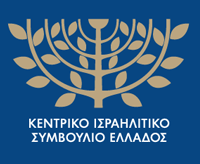ISRAELI COMMUNITY OF CHALKIDA
BACKGROUND
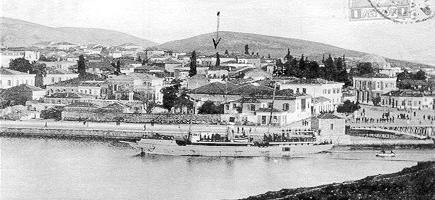 Chalkida is the capital of the island of Evia, one of the "MAKRAN ISLANDS" (Evia, Cyprus, Crete) according to the Prophet Isaiah and the "TESTS" according to Philo of Alexandria. The Romaniote Jewish Community of Chalkida may not be the oldest in Greece, but it is the only one in Europe that has existed in the same city, uninterrupted, for 2.500 years. It participates in the life of the city and it is natural that it has written its own history.
Chalkida is the capital of the island of Evia, one of the "MAKRAN ISLANDS" (Evia, Cyprus, Crete) according to the Prophet Isaiah and the "TESTS" according to Philo of Alexandria. The Romaniote Jewish Community of Chalkida may not be the oldest in Greece, but it is the only one in Europe that has existed in the same city, uninterrupted, for 2.500 years. It participates in the life of the city and it is natural that it has written its own history.
It is said that the name of the city comes from the Semitic root "Halek" which means to cut, but also gravel or a piece of land, a view supported by Professor Eleftheriadis.
The Jewish presence in Evia and especially in Chalkida is so old that we believe that the first Jews came after 586 BC. It was probably the PERATES who followed the Phoenicians, as traders, when they came to Greece and headed for Thebes, passing through Evia. As for the period of the Hellenistic years, the Jews are undoubtedly settled and organized in parishes mainly in Chalkida, as mentioned by the authors G. Fteris, Papakyriakou, Filippopoulos and Metropolitan Themelis.
The Jewish presence is also attested by the testimonies of travelers, who confirm that there was a Community in Chalkida during the Byzantine period, under the Venetians (1205-1470) and during the period of Turkish rule (1470-1833).
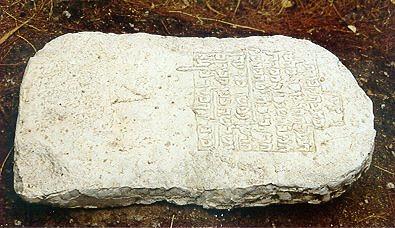 The 1159 the Spanish traveler Rabbi Benjamin ben Jonah from Tudela visits the city and mentions in his travelogue that 200 Jews live in Chalkida (according to others 200 families). He finds that there is no anti-Semitism in all of Greece, that the Jews in Chalkida have always lived inside the Castle, they spoke only the Greek language, and it was very difficult to distinguish them from the other residents. Even that they had established their own district, in the middle of which they erected a Synagogue. He also met three Rabbis, Eligia Valteri, R. (perhaps Raphael) Emmanuel and R. Kalev, head of the parish.
The 1159 the Spanish traveler Rabbi Benjamin ben Jonah from Tudela visits the city and mentions in his travelogue that 200 Jews live in Chalkida (according to others 200 families). He finds that there is no anti-Semitism in all of Greece, that the Jews in Chalkida have always lived inside the Castle, they spoke only the Greek language, and it was very difficult to distinguish them from the other residents. Even that they had established their own district, in the middle of which they erected a Synagogue. He also met three Rabbis, Eligia Valteri, R. (perhaps Raphael) Emmanuel and R. Kalev, head of the parish.
During the period when Venetians and Lombards lived in Chalkida, which was called NEGROPONTE, the Jewish Community flourished and its members were engaged in trade, wine export, handicrafts and were artisans, dyers and silk weavers.
Unfortunately, towards the end of the Venetian rule, wars, plagues and heavy taxation have impoverished the Community. The Jews were still engaged in trade, but they had no political rights, did not participate in the administration, and had the obligation to perform ransom debts. The Turks followed the same policy towards the Jews.
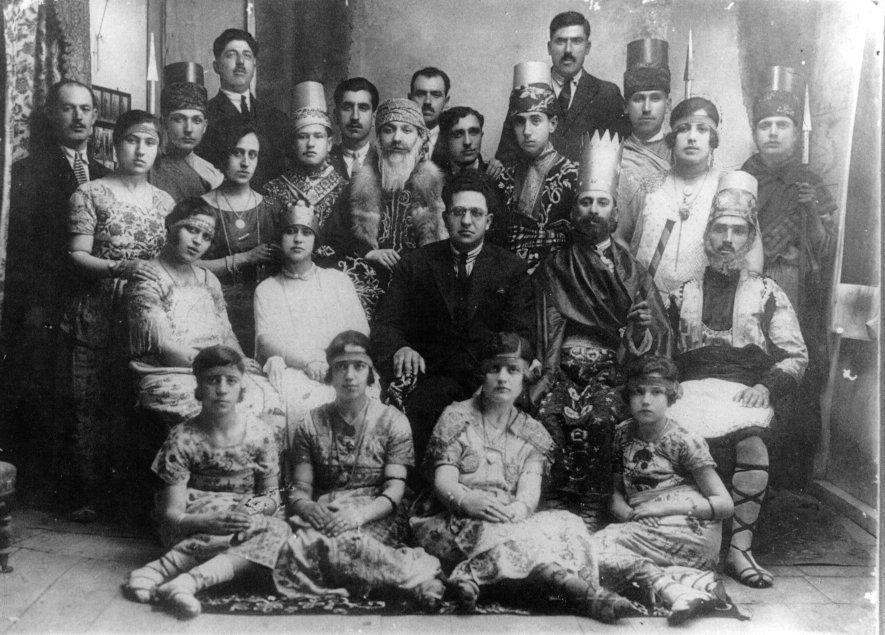 The 1470 the Castle is occupied by Mohammed the Conqueror. The carnage was terrible. The Janissaries fled in exchange for gold, and many Jews fled to Thebes, where there was a large Jewish Community. From this period, Chalkida and together with the Jewish Community, enters a period of decline, cruel exploitation, brutality and terror, while it is mercilessly plagued by the plague.
The 1470 the Castle is occupied by Mohammed the Conqueror. The carnage was terrible. The Janissaries fled in exchange for gold, and many Jews fled to Thebes, where there was a large Jewish Community. From this period, Chalkida and together with the Jewish Community, enters a period of decline, cruel exploitation, brutality and terror, while it is mercilessly plagued by the plague.
The revolution of 1821
The idea of the Revolution is also maturing in the Euboean land. The Jews also follow the fate of all the inhabitants of the city.
G. Fousaras and G. Filippopoulos mention that the Jewish families KOEN and KRISPI joined the Philiki Etairia. They are big, strong and educated families. We meet a Crispis, chieftain of Kriezotis, in Trizina, next to Th. Kolokotronis.
In 1840, when Evia is now part of the Greek territory, the first town planning diagram of the Castle is made, where 455 properties are listed, of which 51 are Jewish, and the members of the Community amount to 400 people.
In 1894 the Jewish Community has 52 families and 284 individuals, as appears from a letter document of the Community for help, to the American co-religionists. The cause of this appeal is the great destructive earthquake that demolished almost the entire city. During this period the population of the Community is reduced to 170 members. Many will move to other communities, such as Volos.
WWII - HOLOCAUST
 In his Greco-Italian War 1940, among the first Greek officers who fell heroically fighting, was the Chalcidian Jewish Colonel Mordecai Frizis.
In his Greco-Italian War 1940, among the first Greek officers who fell heroically fighting, was the Chalcidian Jewish Colonel Mordecai Frizis.
During the Holocaust, I.K. Chalkidas numbered 327 members of which only 22 were lost and this is due to the protection provided by our fellow citizens, the Fighters of the National Resistance and Metropolitan Grigorios, who also hid the Holy vessels of the Synagogue in the Metropolis area.
JEWISH NEIGHBORHOOD - SYNAGOGUE - JEWISH LIFE

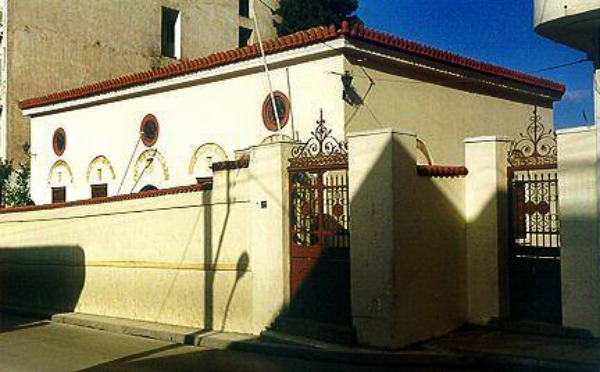 The Jews, upon their arrival in Chalkida, settled in the Castle, (inhabited since 500 BC and demolished in 1890) in the NE. side, near the Upper Gate, which took the name Gate of the Jews.
The Jews, upon their arrival in Chalkida, settled in the Castle, (inhabited since 500 BC and demolished in 1890) in the NE. side, near the Upper Gate, which took the name Gate of the Jews.
The Jewish quarter was crossed by Ano Pylis street, today's Kotsou, until the junction of Papanastasiou and M. Frizi streets.
On Kotsou Street is the Synagogue which operates normally under the care of the Israeli Community of Chalkida. It is unknown when the first Synagogue was built in Chalkida. The current one was rebuilt, to the same dimensions, in 1855 after the fire of 1854, during Holy Week, with money provided by the Duchess of Placentia.
Throughout the centuries, every time the Synagogue burned down, a new one was immediately erected in the same place. However, the fire of 1854 destroyed all the archives of the Community, the library, a number of manuscripts from poetry collections and a number of heirlooms from donations of incalculable value. Three old Scrolls are the only ones saved after superhuman efforts. The votive columns, built into the wall of the Synagogue, now provide us with important information about it.
JEWISH CEMETERY
Old and new cemeteries coexist in the same area, on an area of 17 acres, on Messapion Street, which was renamed in 2002 by the Municipality of Chalkide to Hellenic Jewish Martyrs Street.
From 1990-2000, restoration and maintenance work was carried out on the old tombs. About 600 tombs were restored. Through the tombstones, most of which refer to rabbis, it is revealed that the Community was a small spiritual center, confirming its reputation as a small TSFAT (spiritual and kabbalistic center in northern Israel), a title held by communities such as Thessaloniki and of Patras.
 From the tombstones of our cemetery it is also revealed that a large number of Spanish-Jews settled in the Community of Chalkida, which did not, however, assimilate the Romanian element. Nevertheless, it is certain that he contributed the most to the spiritual and economic prosperity of the Community.
From the tombstones of our cemetery it is also revealed that a large number of Spanish-Jews settled in the Community of Chalkida, which did not, however, assimilate the Romanian element. Nevertheless, it is certain that he contributed the most to the spiritual and economic prosperity of the Community.
In the area of the cemetery there is the funeral room, the laundry, the guard's house and an old building which has been reconstructed and is going to house the finds of the cemetery as a Museum. This building was the first guard's house, the construction of which was financed in 1897 by Ferdinand Rothschild, when he visited Chalkida. In the fall of 1999, the Mezuzah installation ceremony took place in the renovated building.
In the same building site externally, at memory of the victims of the Holocaust, a Memorial has been erected which is flanked by the busts of the blessed Metropolitan Grigorios and Con/arch Frizis. The unveiling of the Monument and the busts took place in June 2000 with the participation of the Municipality of Chalkidea, the Central Jewish Council of Greece and the Community. At this point we must point out that another bust of M. Frizis has been erected in a square near the old bridge. Also, a section of Siokou Street is called M. Frizi Street and there is a square of the same name, opposite the Fire Department building.
COMMUNITY TODAY
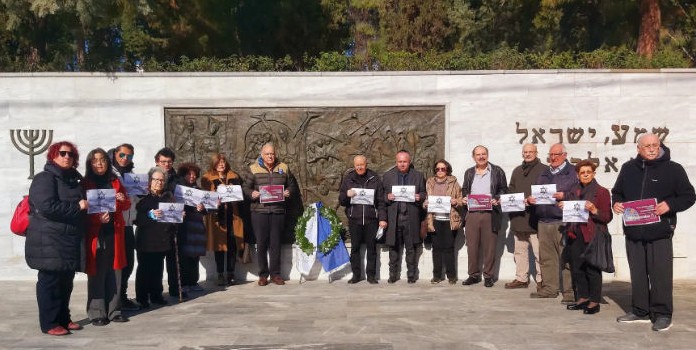 After the liberation in 1945, many left and settled in Athens, Israel and America. Nevertheless, the Community was reorganized and is functioning normally.
After the liberation in 1945, many left and settled in Athens, Israel and America. Nevertheless, the Community was reorganized and is functioning normally.
Today it has only 66 members. It is a Public Law Legal Entity with a religious and charitable nature and is governed by a five-member council, which is elected every three years.
